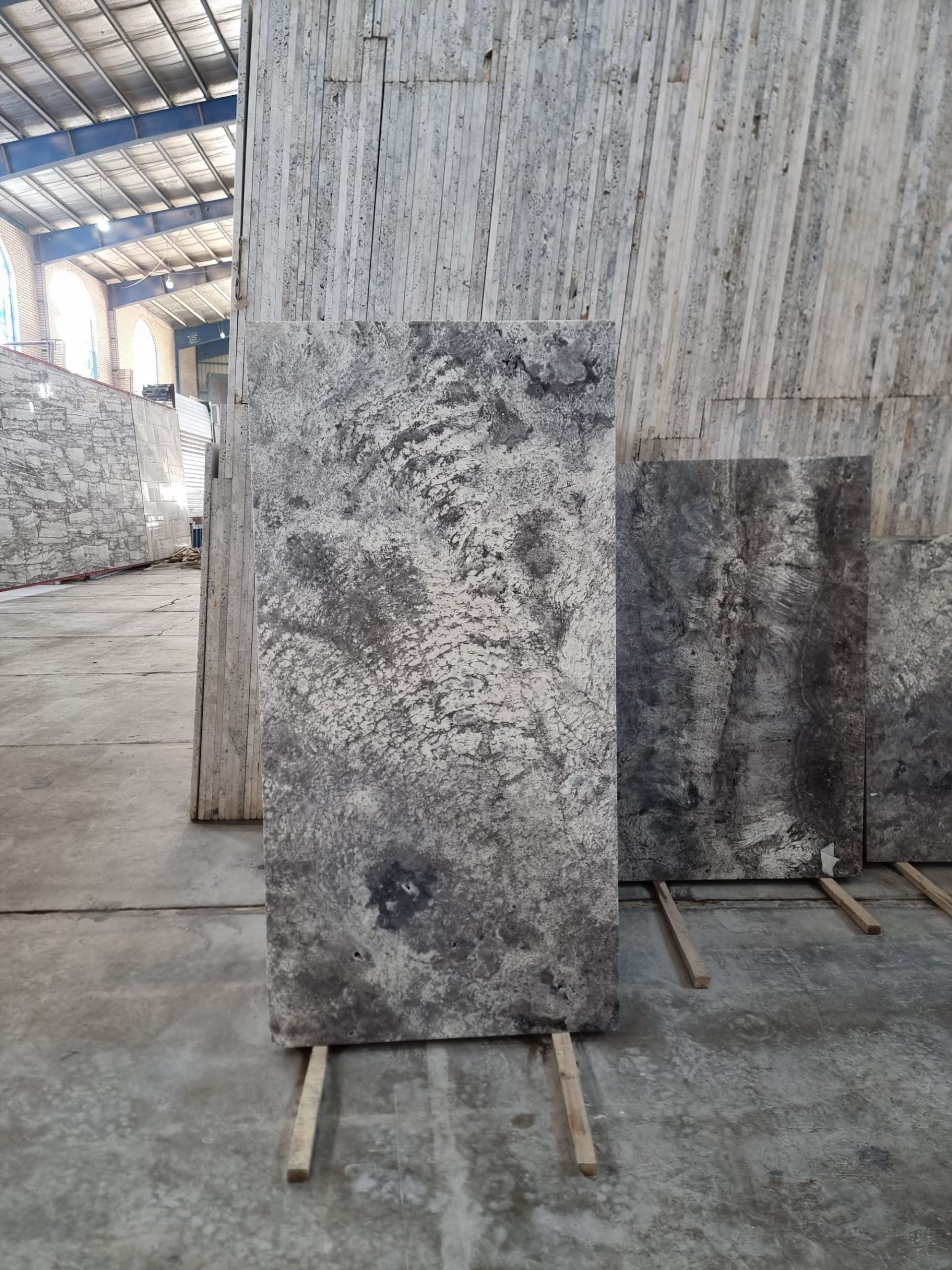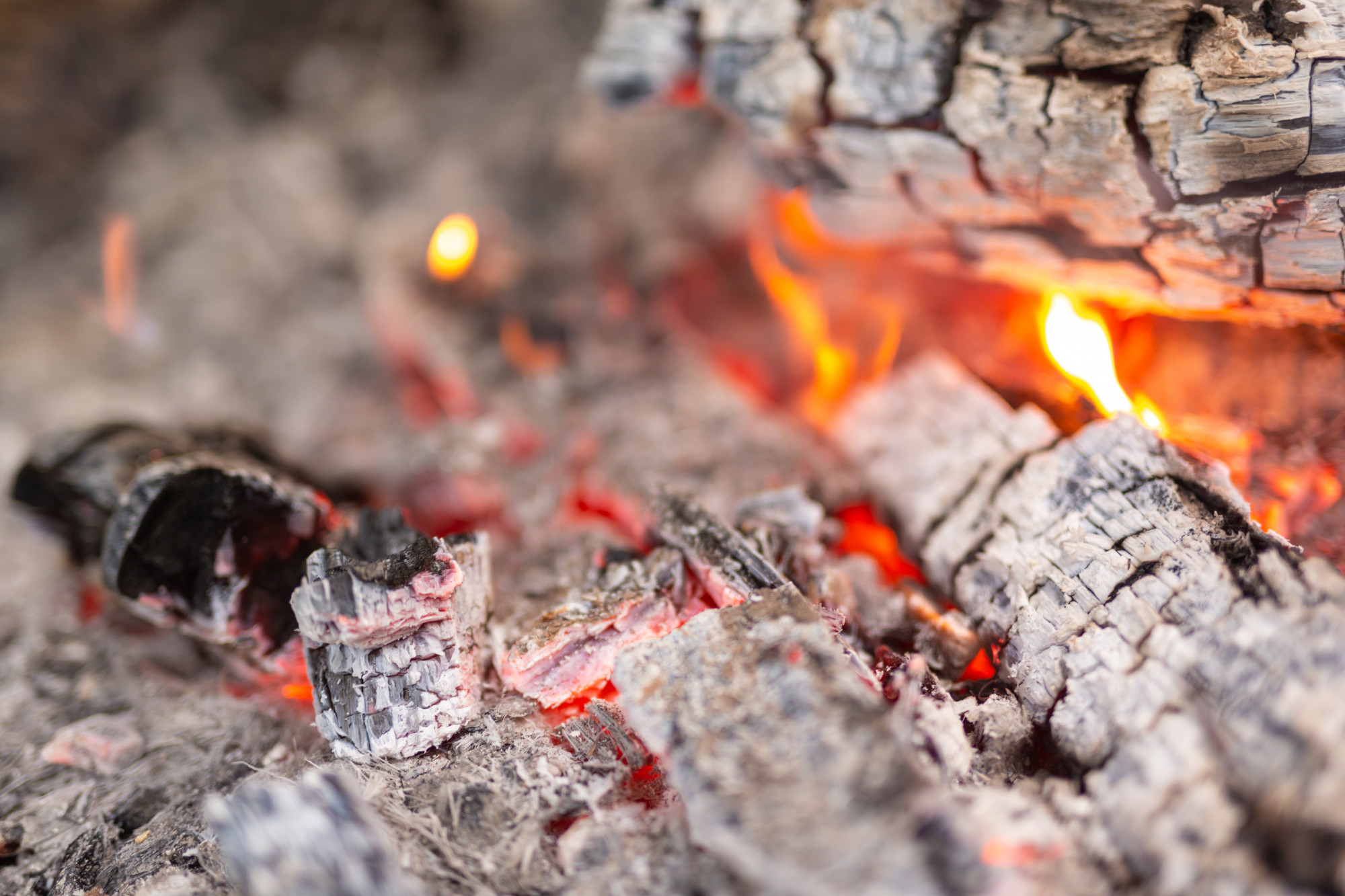Silver travertine stone is renowned for its moderate heat resistance, making it suitable for indoor and outdoor applications. A joint inquiry surrounding silver travertine pertains to its ability to withstand heat. In this article, we will thoroughly examine the heat resistance properties of silver travertine stone, evaluating its suitability for diverse applications.
Introduction to Silver Travertine Stone
Silver travertine is a sedimentary rock formed by the precipitation of calcium carbonate minerals from mineral springs or groundwater. Its elegant silver-grey hues, intricate veining, and porous surface texture characterize it. This natural stone is commonly quarried in regions such as Iran, where it has been used for centuries for various architectural and decorative applications.
The material properties of silver travertine
The material properties of silver travertine are essential considerations for anyone seeking to understand its characteristics and applications fully. Silver travertine, like other natural stones, is formed over thousands of years by accumulating and compressing minerals, primarily calcium carbonate, in underground springs or caves. This natural process produces a stone with unique patterns, colors, and textures, making each silver travertine distinct. Additionally, the density of silver travertine, influenced by factors such as pressure and time during its formation, contributes to its overall strength and resilience. Furthermore, the surface structure of silver travertine stone, whether polished, honed, or tumbled, affects its appearance, texture, and performance in different environments. Understanding these material properties is crucial for architects, designers, and homeowners looking to incorporate silver travertine into their projects while considering durability, aesthetics, and heat resistance.
The thermal conductivity of silver travertine
The thermal conductivity of silver travertine is a vital aspect to consider when evaluating its suitability for various applications, particularly in environments where heat resistance is a concern. Thermal conductivity refers to the ability of a material to conduct heat, and it plays a significant role in determining how effectively a stone can dissipate or absorb heat. Silver travertine’s thermal conductivity is influenced by factors such as its mineral composition, density, and surface finish. Generally, natural stones like travertine have lower thermal conductivity than materials like metal or glass, meaning they tend to retain heat rather than conduct it rapidly. This characteristic can be advantageous in applications where maintaining a stable temperature is desirable, such as flooring or wall cladding in indoor and outdoor settings. However, it’s essential to consider each project’s specific requirements and the silver travertine’s intended use to ensure that its thermal conductivity aligns with the desired outcome. By understanding the thermal conductivity of silver travertine, architects, designers, and builders can make informed decisions about its use in heat-sensitive environments while leveraging its natural beauty and durability.

Heat Resistance Testing of Silver Travertine
Heat resistance testing of silver travertine involves subjecting stone samples to controlled temperature conditions to evaluate their performance and behavior when exposed to heat. This testing process helps assess the stone’s ability to withstand high temperatures without undergoing significant changes in its properties, such as color alteration, cracking, or deterioration.
Silver travertine samples are typically heated gradually during heat resistance testing to simulate real-world conditions, such as exposure to sunlight or proximity to heat sources like fireplaces or stovetops. The samples are monitored closely for any signs of thermal stress, such as discoloration, warping, or structural damage.
Various factors are considered during heat resistance testing, including the stone’s mineral composition, density, porosity, and surface finish. These factors can influence how effectively the stone dissipates heat and withstands thermal expansion and contraction.
The results of heat resistance testing provide valuable insights into the performance of silver travertine in heat-prone environments and help architects, designers, and builders make informed decisions about its use in applications such as countertops, flooring, and outdoor paving. Additionally, manufacturers may use the data obtained from heat resistance testing to refine production processes and enhance the overall quality and durability of silver travertine products.

Applications of Silver Travertine in Heat-Prone Environments
The applications of silver travertine in heat-prone environments are diverse, thanks to its unique combination of aesthetics and durability. Silver travertine exhibits moderate heat resistance despite being a natural stone, making it suitable for indoor and outdoor settings where high temperatures are expected.
One prominent application of silver travertine in heat-prone environments is outdoor paving. Silver travertine can withstand prolonged exposure to sunlight and high temperatures without fading or deteriorating, whether used for patios, pool decks, or pathways. Its natural cooling properties also make walking barefoot, even on hot summer days, comfortable.
Another popular application is as a material for fireplace surrounds and hearths. Silver travertine adds a touch of elegance to fireplace designs while providing a durable and heat-resistant surface that can withstand the intense heat generated by fires. Its natural variations in color and texture create a visually appealing focal point in any living space.
Silver travertine is often used for kitchen countertops and backsplashes in heat-prone environments. Its resistance to heat makes it suitable for placing hot pots and pans directly on the surface without causing damage. The stone’s natural beauty adds sophistication to kitchen designs, offering practicality and functionality.
Furthermore, silver travertine can be utilized for outdoor kitchen countertops and barbecue islands, where it can endure exposure to heat from grills and outdoor cooking appliances. Its durability and resistance to staining make it an ideal choice for these applications, allowing homeowners to enjoy outdoor entertaining without worrying about damage to their countertops.
Overall, the versatility of silver travertine makes it a popular choice for various applications in heat-prone environments, combining aesthetic appeal with practicality and durability. Silver travertine adds value and beauty to any space while withstanding the rigors of heat exposure, whether used for outdoor paving, fireplace surrounds, kitchen countertops, or outdoor kitchens.

Maintenance Practices to Preserve Heat Resistance in Silver Travertine
To maintain the heat resistance of silver travertine, regular cleaning with mild detergent and water is essential to remove dirt and stains promptly. Additionally, applying a high-quality penetrating sealer designed for natural stone surfaces helps protect against moisture, stains, and heat damage. It’s crucial to avoid suddenly exposing silver travertine to extreme temperatures and to use protective measures such as heat-resistant mats or coasters under hot objects. Periodic inspections and professional maintenance can also help identify and address any issues early, ensuring silver travertine surfaces’ long-term heat resistance and durability.
Innovations in Silver Travertine Production for Enhanced Heat Resistance
Innovations in silver travertine production are continually being explored to enhance its heat resistance and overall performance in various applications. Manufacturers are investing in research and development to develop new techniques and technologies that can improve the natural properties of silver travertine and make it more resilient to high temperatures. One such innovation involves the introduction of additives or modifiers during the manufacturing process, which can enhance the stone’s heat resistance without compromising its aesthetic qualities. Additionally, advancements in surface treatments and finishes are being explored to create protective barriers that shield silver travertine from heat damage while maintaining its natural appearance. These innovations not only expand the range of applications for silver travertine but also ensure that it remains a durable and reliable choice for heat-prone environments for years to come.
I suggest you read: The different colors and patterns of silver travertine
Conclusion
In conclusion, silver travertine stone exhibits moderate heat resistance, making it suitable for various indoor and outdoor applications. While it may not withstand extremely high temperatures like granite, it offers durability, aesthetic appeal, and versatility. By understanding its properties and proper maintenance techniques, homeowners and designers can leverage

 Marble
Marble